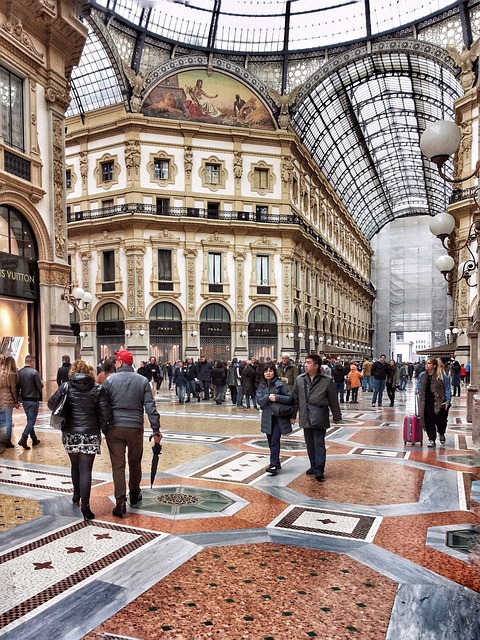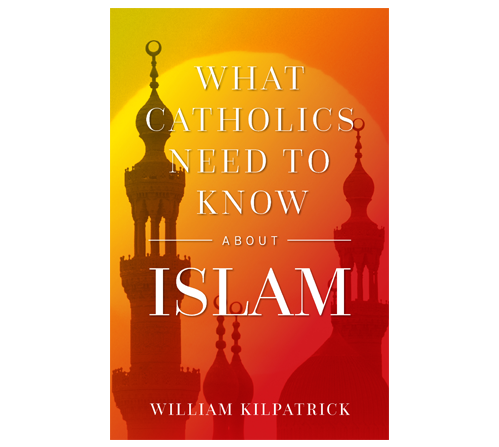Out of the Dark Ages and into the Seventh Century
One of my college history professors liked to emphasize that secularization was the most important development in modern history. At the time, it didn’t seem quite as important to me as the Industrial Revolution, two world wars, and the development of the atomic bomb, but I gradually came to see that he was right.
As Solzhenitsyn observed, secularization and the troubles that accompany it happens when men forget God.
However, secularization doesn’t require the kind of atheist society that Solzhenitsyn lived in. It can flourish in societies that acknowledge God but consider Him largely irrelevant.
This attitude is prevalent in most of the Western world but especially in Europe. Having just returned from a three-week European vacation which included visits to Vienna, Venice, and Milan, I was struck by the degree of secularization in places that were once solidly Catholic.
Enlightenment
Some of the tour guides my wife and I encountered seemed to be proud of this secularization. One pointed out that although you see churches everywhere, relatively few people actually attend church services. She seemed to think that this was a sign of progress. Indeed, a common theme of the guides was that Europe had, after many centuries, come out of the “Dark Ages” into the light of humanism. They didn’t use the term “humanism,” but some did use words like “brotherhood” and “fraternity” to describe the higher plateau to which most of Europe had ascended. One of the reasons that Pope Francis is so popular in Europe is that he, too, subscribes to this secular religion of fraternity.
The guides admitted that, yes, there were problems in Europe, such as immigration — but not to worry because the immigrants were rapidly and smoothly assimilating. Often these platitudes were uttered as our walking tour passed clusters of Muslim women clothed in head-to-toe black burqas. Assimilation did not seem to be high on their list of priorities.
It’s not, of course, as though this secular-and-proud-of-it attitude is confined to Europeans. One of our tour groups included a well-educated and well-traveled Australian couple who casually dismissed traditional beliefs as throwbacks to the “Dark Ages,” and who looked upon the Bible as “just stories.”
But Europeans’ dismissal of the sacred sphere is more puzzling than secularization among Australians and Americans. Why? Because Europeans are more dependent on the sacred sphere.
Religion Is Good for Tourism, But Little Else
Tourism is perhaps Europe’s biggest industry. Yet many of the main tourist destinations are cathedrals and castles that were built by people who took religion very seriously. St. Peter’s Basilica and the Sistine Chapel are arguably the main attractions in Rome. St. Mark’s is a high point of a trip to Venice. St. Stephens Cathedral in Vienna is a focal point for tourists, and in Milan the two main attractions are the magnificent Cathedral of Milan (the third largest church in the world) and the Church of Santa Maria delle Grazie, which houses Leonardo da Vinci’s painting of the Last Supper. Take away da Vinci and the Duomo (as the cathedral is usually called), and you’ve lost half the incentive for visiting Milan at all.
Though Europe’s tourism industry relies on sacred spaces, Europe’s secular elites insist that the sacred is irrelevant to today’s culture. Thus, many look upon Christianity as a relic, a museum piece. The elite view is that Christianity may be useful for drawing in the tourists and also for reminding woke Europeans that they are fortunate not to live in that narrow-minded and guilt-ridden past. Otherwise, it can be safely ignored.
This attitude is reflected in the refusal to include any acknowledgment of the Christian contribution to European civilization in the Constitution of the European Union. It’s also reflected in the self-destructive tendency to squeeze Christianity out of the public square in order to make room for the latest secular trends.
Yet, as Christianity is forced to yield more and more of the public square to secularism, the public square becomes less meaningful. It not only loses the sense of the supernatural, but also the original high intentions of secular humanism — namely, the emphasis on the dignity of man and the rights and liberties that correspond to that dignity. Eventually, the public square becomes merely a reflection of pop culture and, instead of achieving dignity, the masses become slaves to fashion.
Milan provides a rather striking example of this devolution. The two main buildings in Duomo Square are the iconic Cathedral and the impressive Galleria Vittorio Emanuelle II just a few hundred feet away. According to one guidebook to the city, the Galleria, which was begun in 1865, is “a hymn to progress” and “a place where the Milanese ‘intelligentsia’ has always liked to meet … possibly at a table in a café’ or restaurant.”
Ah, yes, “a hymn to progress” and, at the same time, a sort of cathedral to human ingenuity. The soaring glass-and-steel ceiling vaults of the Galleria seem to be inspired by the ceiling vaults in a gothic Cathedral.
Nowadays, however, this architectural masterpiece seems more like a hymn to pop culture than “a hymn to progress.” With its restaurants and trendy shops (Prada, Louis Vuitton, Gucci, Dior etc.), it now presents itself as an elegant and upscale shopping mall — a mall that sells trendy ideas and lifestyles along with trendy fashions. For example, one Prada display window features three well-dressed male mannequins and a sign that asks: “What would you want your mom to know about you?” Another window displays three female mannequins and the question: “What do you hope your parents never find out about you?”
One implication of these displays seems to be that gay and lesbian sex and/or sex outside of marriage is cool. The other implication is that parents are old-fashioned and need to get with the times (although most Milanese parents likely succumbed to the religion of diversity a long time ago).
The Fashion Capitol
It would be inaccurate, however, to portray what is happening in Europe simply as a competition between the secular and the sacred. In many cases, the churches actually cooperate in the secularization process.
Here’s an example. As you approach the Milan Cathedral from behind, one of the first things you notice is a billboard-sized ad projected onto the side of a building right across the street from the church. The ad is for a brand of perfume, and it features a voluptuous, Madonna-like singer.
“That’s highly provocative,” I thought, “they should show more respect for Catholics.” Then, as we turned the corner, a still larger projected ad appeared on the side of the Cathedral itself. It was an ad for Prada and it was as blatantly sexy as the one for perfume.
“How do they get away with that?” I asked my wife. She pointed out that the diocese had probably given permission to use the cathedral as ad space in return for money. One imagines that the sum was quite a bit more than thirty pieces of silver.
In Italy and in much of Europe, what began as an opening of the Church to the world under Pope John XXIII has become a surrender to the world under Pope Francis and the progressive bishops he appoints.
Europe’s Future
Meanwhile, a third party has arisen in Europe which rejects both the secular world and Christian belief.
Not far from the Galleria, my wife and I sat in a bistro for coffee and a bite to eat. Through the window we could see two women in black burqas seated on the pavement with their backs against the wall. The burqas covered everything except their eyes, and they fingered prayer beads that, at first glance, looked like rosaries. Their fingers were also gloved lest any man be tempted by a show of skin.
What were they praying for? Peace on earth? Good will to men? Blessings on the Jews and other infidels? Not likely. Granted, there were other Muslims in the square who appeared to have better assimilated. They wore brightly colored ankle-length dresses and minimalist head scarves. And they listened to pop music on their iPods.
But Islam-lite does not seem to be the future of Europe. Rather, it is the hard-line Muslims — those who keep their women in burqas and prefer to live in ghettos and no-go-zones — who seem to be setting the agenda for the continent. Part of their agenda is to limit the free-speech rights of other Europeans. Thus, under pressure from true believing Muslims and true believing leftists, the European Court of Human Rights has ruled that criticism of Islam is now a crime.
If there is a “Dark Ages” religion in Europe, it is fundamentalist Islam, not Christianity. Yet Europeans who consider Christianity to be a “museum piece” would not dare to say the same about Islam — except, perhaps, behind closed doors.
What you have instead are tour guides who lament the Christian influence on Europe, yet welcome mass Muslim migration as a sign of enlightenment. When it comes to seeing the reality of Islam, many Europeans might as well be wearing burqas themselves.
This article originally appeared in the October 11, 2024 edition of The Stream.
Pictured above: Galleria in Milan, Italy
Photo credit: Pixabay


